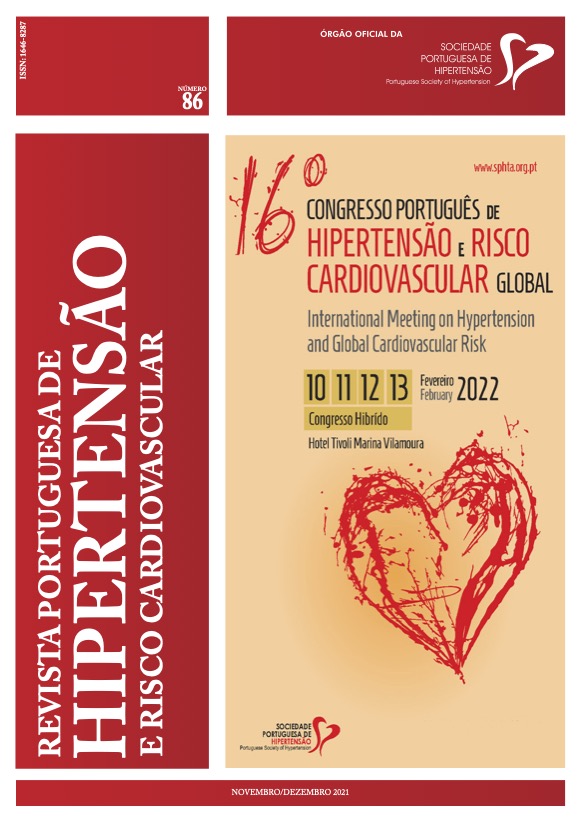BLOOD PRESSURE MEASUREMENT IN THE OFFICE: THERE ARE DIFFERENCES BETWEEN THE FIRST AND SECOND MEASUREMENTS?
DOI:
https://doi.org/10.58043/rphrc.11Keywords:
HTA, Systolic blood pressure, Diastolic artery pressureAbstract
Introduction: The correct measurement of blood pressure (BP) is essential for the diagnosis and approach of blood hypertension. The way to appropriately perform this measurement is described in the “Guidelines for the Management of Arterial Hypertension 2018” from the European Society of Cardiology. This work pretends to highlight the importance of performing three blood pressure measurements during the evaluation of each patient and also analyse the differences between the two blood pressure measurements underwent in the consultation.
Objetive: To analyse the difference between the first and second BP measurements in the office, in patients following a specialized HTA hospital consultation.
Methods: This is a retrospective study, corresponding to two years of follow-up of 149 patients in a hypertension consultation, between the years of 2017 and 2018. Sociodemographic data and blood pressure measurements were collected. Data were processed using SPSS version 23.0. Central tendency and dispersion values for continuous variables are presented as means and standard deviations.
Results: The mean age of the participants was 55±16 years, with 53% of the male patients. In each patient, 2.4±0.5 blood pressure measurements were performed in each consultation. The differences between the systolic blood pressure and diastolic blood pressure values from the first and second measurements were 26.0±6.0mmHg for systolic blood pressure (pvalue <0.001) and 15.0 ± 3.2mmHg for diastolic blood pressure (pvalue <0.001). The differences between systolic blood pressure and diastolic blood pressure in the last two measurements performed in the consultation were statistically significant.
Conclusion: With this study, we found that the values measured in the first and second assessments present a significant difference, which reinforces the need for a third assessment, thus corroborating the importance of the guidelines already established, which indicate that in cases where the first two measurements differ by more than 10 mmHg a third assessment should be carried out, avoiding classification errors.
Downloads
References
Lackland DT, Weber MA. Global burden of cardiovascular disease and stroke: hypertension at the core. Can J Cardiol. 2015;31(5):569-71.
2018 ESC/ESH Guidelines for the management of arterial hypertension. The Task Force for the management of arterial hypertension of the European Society of Cardiology (ESC) and the European Society of Hypertension (ESH)
Campbell NR, McKay DW. Accurate blood pressure measurement: why does it matter? Can Med Assoc J 1999;161:277-8.
McKay DW,Campbell NRC,Parab LS,Chockalingam A, Fodor JG. Clini- cal assessment of blood pressure. J Hum Hypertens 1990;4:639-45.





